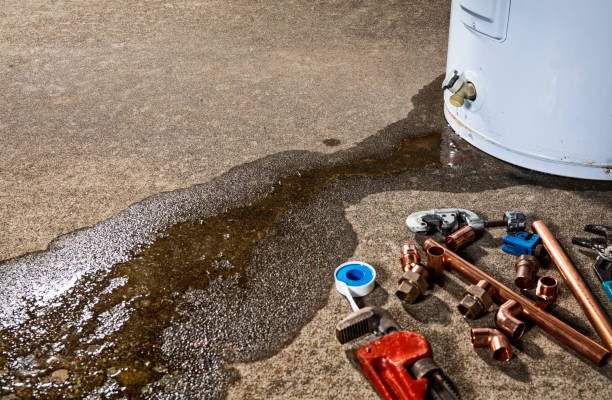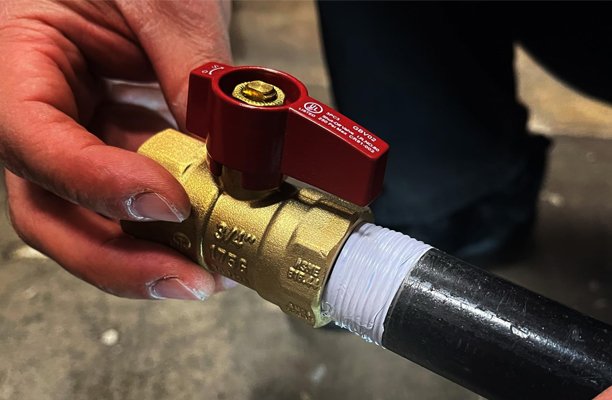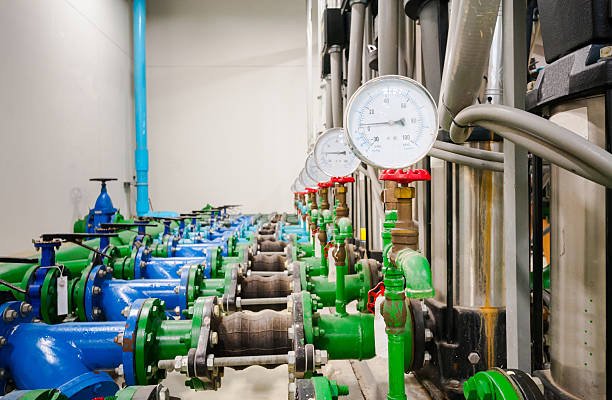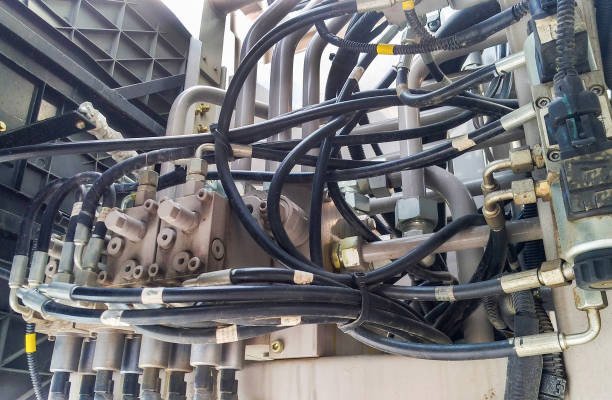Hydraulic fittings are crucial components of any hydraulic system, ensuring that fluids move efficiently and without leaks. When properly sealed, they maintain the performance and safety of the equipment. Understanding how to seal hydraulic fittings is essential for both novice and seasoned mechanics or engineers. In this comprehensive guide, we’ll walk through the importance of sealing hydraulic fittings, common sealing methods, and the steps you can follow to ensure a secure, leak-free connection.
Why Sealing Hydraulic Fittings is Critical
In hydraulic systems, leaks not only cause inefficiencies but can also lead to severe equipment damage and safety hazards. Leaks can cause pressure drops, which can result in improper functioning of machinery. Additionally, hydraulic fluids are often under high pressure, and a small leak can escalate into a more significant issue quickly, potentially damaging other components or causing accidents.
By understanding how to seal hydraulic fittings properly, you prevent these issues, ensure system longevity, and maintain the integrity of the hydraulic circuit.
Types of Hydraulic Fittings and Seals
Before diving into how to seal hydraulic fittings, it’s essential to know the different types of fittings and seals used in hydraulic systems:
- Threaded Fittings: These are the most common types of hydraulic fittings and include straight, parallel, and tapered threads.
- O-ring Face Seals (ORFS): These use an O-ring to create a seal, making them highly reliable in preventing leaks.
- Flare Fittings: These fittings use a flared tube to create a mechanical seal.
- Compression Fittings: These fittings compress a sleeve to create a tight seal.
- Bite-type Fittings: These fittings “bite” into the tube to create a strong connection.
Common Causes of Leaks in Hydraulic Fittings
Hydraulic fitting leaks can occur due to various reasons. Some of the most common causes include:
- Improper Assembly: Incorrectly assembled fittings can lead to gaps or spaces that allow fluid to leak.
- Loose Fittings: Fittings that aren’t tightened sufficiently can become loose, especially when exposed to vibration.
- Over-tightening: While loose fittings cause leaks, over-tightening can deform the threads, damaging the seal.
- Worn or Damaged Seals: O-rings and seals degrade over time, causing leaks as they lose their effectiveness.
Best Sealing Methods for Hydraulic Fittings
Now that we’ve discussed the importance of properly sealing hydraulic fittings and the various causes of leaks, let’s explore the most effective methods for sealing these connections.
1. Using Thread Sealants
Thread sealants are widely used to ensure a leak-proof connection in hydraulic systems. Here’s how to use them:
- Select the Right Sealant: Always use a thread sealant rated for hydraulic systems, as they are designed to withstand high pressure and are resistant to the hydraulic fluid.
- Apply Evenly: Apply the thread sealant to the male threads of the fitting. Make sure it’s spread evenly without overloading the threads.
- Avoid the First Thread: Leave the first thread dry to avoid contamination inside the system.
- Cure Time: Allow the sealant to cure, depending on the manufacturer’s recommendations, before pressurizing the system.
2. Using Teflon Tape
Teflon tape, also known as PTFE tape, is another method used to seal hydraulic fittings. It provides a tight seal by filling in small gaps between threads.
- Wrap the Tape Properly: Begin wrapping the tape around the male threads in a clockwise direction, ensuring you cover the threads fully without overlapping too much.
- Avoid Overuse: Applying too much tape can lead to debris entering the hydraulic system.
- Compatibility: Ensure the tape is compatible with hydraulic fluids, as not all PTFE tapes are designed for such applications.
3. O-Rings and Face Seals
O-ring face seals (ORFS) are highly reliable and widely used in high-pressure systems. They prevent leaks by creating a mechanical barrier between the fitting and the port.
- Inspect the O-ring: Before installation, check the O-ring for any signs of wear, cracks, or damage.
- Lubricate: Lightly lubricate the O-ring with hydraulic fluid to prevent it from pinching or twisting during installation.
- Proper Alignment: Ensure that the O-ring is seated correctly and aligned properly with the fitting face.
4. Compression Fittings
Compression fittings work by compressing a sleeve (ferrule) around the tube to create a seal. While effective, they require precise installation:
- Cleanliness: Ensure the fitting, tube, and sleeve are clean and free from debris or contaminants.
- Tighten Carefully: Use the manufacturer’s recommended torque when tightening the nut. Over-tightening can deform the sleeve, while under-tightening may not compress it adequately.
5. Flare Fittings
Flare fittings create a seal by flaring the end of a tube. They are reliable but require precise execution:
- Proper Flare Angle: Ensure the flare angle matches the fitting specification (typically 37° or 45°).
- Lubrication: Lubricate the threads and flare face lightly to avoid damage during tightening.
- Tighten to Torque Specification: Over-tightening can distort the flare, while under-tightening will result in an ineffective seal.
Step-by-Step Guide to Sealing Hydraulic Fittings
1. Inspect Fitting Components
Before starting, inspect all components, including the fitting threads, O-rings, and sealing surfaces. Look for:
- Damaged threads
- Cracks or worn-out O-rings
- Dirt or debris on the surfaces
Any damage or debris can prevent a proper seal, so clean or replace parts as necessary.
2. Choose the Right Sealant
For threaded fittings like NPT or BSPT, you’ll need to use a thread sealant. The two most popular options are:
- Thread Sealant Paste: A liquid sealant that hardens after application, providing a strong bond.
- PTFE Tape: A non-hardening tape that can be wrapped around the threads to create a leak-proof seal.
If you’re working with flared or O-ring fittings (like JIC or ORFS), sealants usually aren’t necessary, as the design is meant to create a metal-to-metal or elastomer seal. However, always check the manufacturer’s specifications.
3. Apply Thread Sealant
For threaded fittings, apply a small amount of thread sealant or wrap PTFE tape around the male threads. Here’s how to do it:
- Thread Sealant Paste: Apply a thin, even layer of sealant to the male threads. Avoid excess, as too much can contaminate the hydraulic fluid.
- PTFE Tape: Wrap the tape clockwise (in the direction the fitting will tighten) around the male threads. Typically, two to three wraps are sufficient. Be sure to avoid covering the first thread to prevent tape from breaking loose inside the system.
4. Insert O-rings (if applicable)
For O-ring face seal or compression fittings, inspect and replace the O-rings if they appear worn or cracked. Lubricate the O-ring slightly with a compatible fluid to prevent it from pinching or tearing during assembly.
5. Tighten Fittings to Manufacturer Specifications
Using a torque wrench, tighten the fittings according to the manufacturer’s torque specifications. Over-tightening can damage threads or crush the O-ring, leading to leaks. Under-tightening, on the other hand, may result in a weak seal.
6. Test the Seal
After assembly, test the system by running it under pressure. Check for any visible leaks around the fitting. If you notice a leak, slightly tighten the fitting (without overdoing it) and retest.
Best Practices for Sealing Hydraulic Fittings
Here are some tips to ensure long-lasting and leak-free hydraulic fittings:
- Use Proper Tools: Always use the correct tools for the job. For example, use a torque wrench to avoid over-tightening.
- Replace Old Seals: O-rings and seals degrade over time, so it’s essential to replace them regularly.
- Monitor the System: Regularly inspect your hydraulic system for any signs of leaks or worn-out components.
- Don’t Overuse Sealant: Applying too much thread sealant can clog hydraulic lines and valves. Always follow the manufacturer’s recommendations for how much sealant to use.
Common Mistakes to Avoid When Sealing Hydraulic Fittings
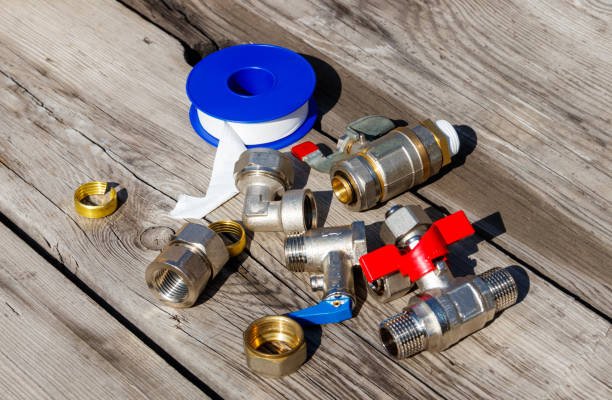
Sealing hydraulic fittings may seem straightforward, but several common mistakes can lead to issues down the line. These include:
- Using the Wrong Sealant: Not all thread sealants are suitable for hydraulic systems. Ensure you use one rated for high-pressure systems and compatible with hydraulic fluids.
- Over-tightening Fittings: Over-tightening can damage threads, seals, and even the fittings themselves. Always use a torque wrench to tighten fittings to the manufacturer’s specifications.
- Ignoring Signs of Wear: If an O-ring, seal, or fitting looks worn, don’t ignore it. Replace it immediately to avoid future leaks.
Conclusion
Sealing hydraulic fittings is an essential part of maintaining a reliable and efficient hydraulic system. By using the correct sealing techniques and following best practices, you can prevent leaks, improve system longevity, and ensure that your equipment operates at its peak performance. Whether you’re using thread sealant, PTFE tape, O-ring face seals, or compression fittings, following the right steps ensures that your hydraulic system remains leak-free and dependable.
FAQs
How do you stop hydraulic fittings from leaking?
Clean the fittings, use the right sealant or O-rings, and tighten them properly. Regularly check for worn seals or damaged parts.
What is the best sealant for hydraulic fittings?
Use a high-quality, hydraulic-rated thread sealant that’s compatible with hydraulic fluids and pressure levels.
What can I use to seal a hydraulic leak?
Use hydraulic-grade thread sealant, PTFE tape, or replace worn O-rings. For persistent leaks, inspect and replace damaged fittings.
Can I use Teflon tape on hydraulics?
Yes, but ensure it’s PTFE tape specifically designed for hydraulic systems, and apply it carefully to avoid contamination.
Why do hydraulic fittings leak even after sealing?
Leaks may occur due to improper tightening, damaged threads, or worn O-rings. Ensure proper installation and replace faulty parts.
How often should O-rings be replaced in hydraulic systems?
O-rings should be replaced whenever they show signs of wear, cracking, or deformation. Regular maintenance checks can help identify worn O-rings early. In high-pressure hydraulic systems, it’s recommended to replace O-rings during scheduled maintenance intervals or anytime a fitting is disassembled to ensure a proper seal and prevent future leaks.

